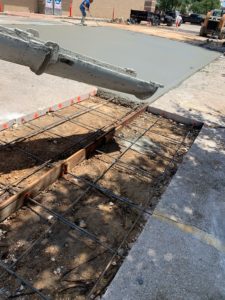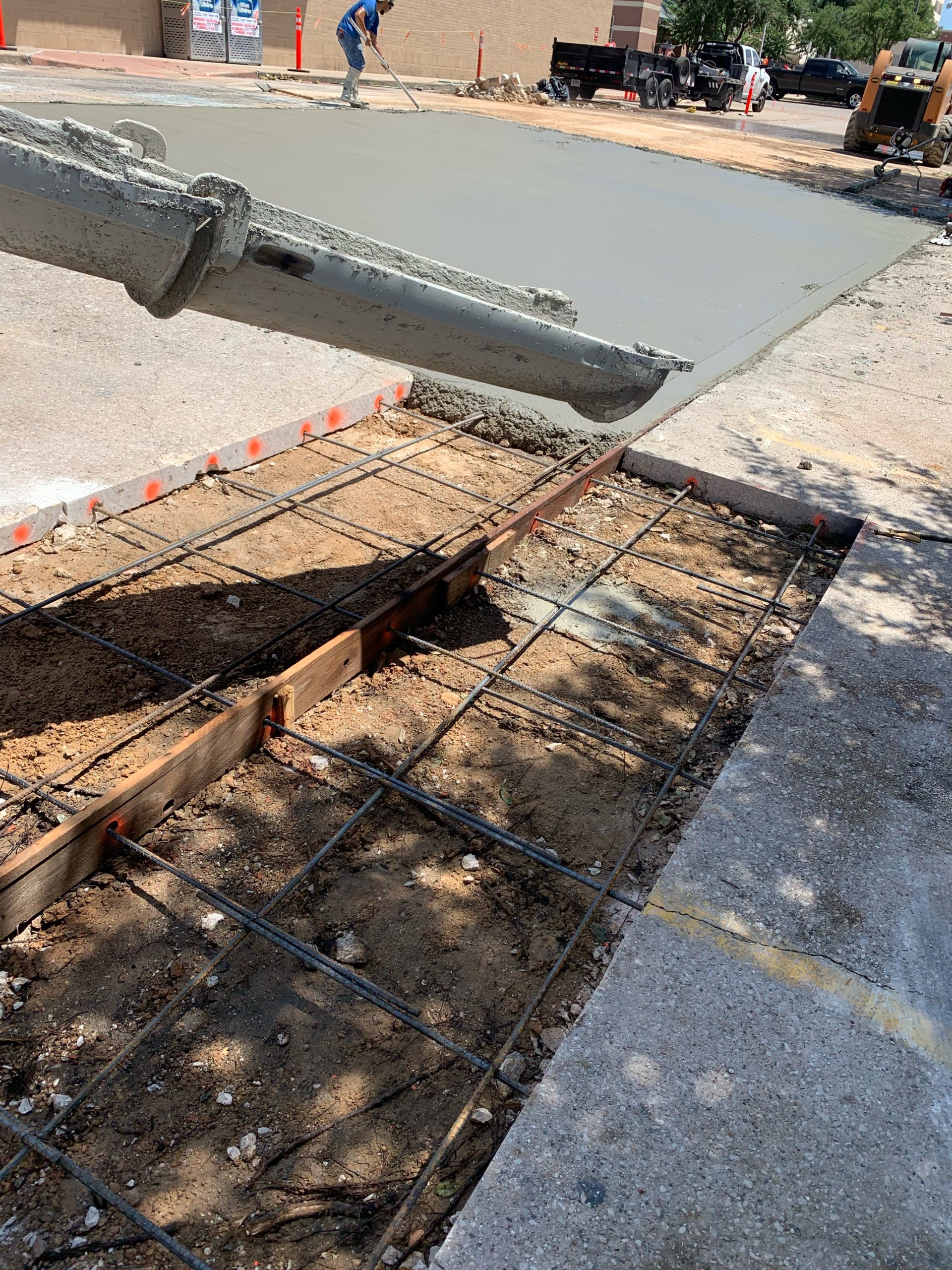
How Do Concrete Contractors Define Trip Hazards?
In general, concrete companies refer to a misaligned, broken, or uneven slab as a trip hazard. Due to the unstable soils in many parts of Harris County and its surrounding areas, Houston concrete workers typically state that slab subsidence or uplift is the most common cause of trip hazards. Vertical displacement is another way of referring to the problem of slabs that no longer align evenly because at least one slab has sunk or been forced upward. Horizontal displacement refers to slabs that have been forced out of position, typically by the pressure exerted by invasive tree roots. Cracks can be the result of an error made by the concrete installer, but they can also be caused by weathering, overloading, deliberate misuse, invasive vegetation, ground heave, or unstable soils.
How Do You Fix Concrete Trip Hazards?
The type of concrete repair needed will depend on the severity of the damage, the type of damage, and the cause of the damage. For example, it may be possible to seal a relatively minor crack in a concrete foundation, or it might be possible to lift a sunken slab back into position through leveling. On the other hand, it is typically more cost-effective to replace broken or misaligned curbs than to attempt a concrete repair. Depending on the specific pavement, new concrete installation may also be the best choice for severe uplifts, large working cracks, or pavements that have begun to crumble from exposure to overweight vehicles. Concrete grinding can minimize a tripping hazard, but it rarely addresses the underlying issue, and it may not result in a pavement that complies with the ADA. Horizontal cutting is another option that may or may not comply with the ADA, and, like grinding, it seldom fixes the underlying problem.
Is It Acceptable to Simply Mark the Tripping Hazard?
It may seem logical to paint or otherwise mark the hazard so that pedestrians can see it, but concrete companies do not recommend it. For one thing, the fact that you marked the hazard is proof that you were aware of its existence, and this could be used against you if someone sues you because they tripped and injured themselves. Furthermore, if water collects near the hazard, people could still trip because they cannot see your well-intentioned warning, especially at night. People relying on wheelchairs will still be facing an obstacle that could be impassable, bicyclists could still be at risk, and people with limited vision could be unable to identify the hazard properly.
For Concrete Repair or Concrete Installation, Contact Marathon Solutions Group
Marathon Solutions is a well-respected Houston concrete and asphalt company with an exceptional reputation for craftsmanship, customer service, honesty, and professionalism. Our services include paving repairs, concrete installation, asphalt paving, parking lot striping, asphalt sealcoating, industrial services, thermoplastic markings, asphalt milling, marking removal, parking lot signage, asphalt resurfacing, and bollard installation. You can request a free quote by emailing HQ@Marathon-Solutions.com, calling 800-879-1147, or submitting the online form.


